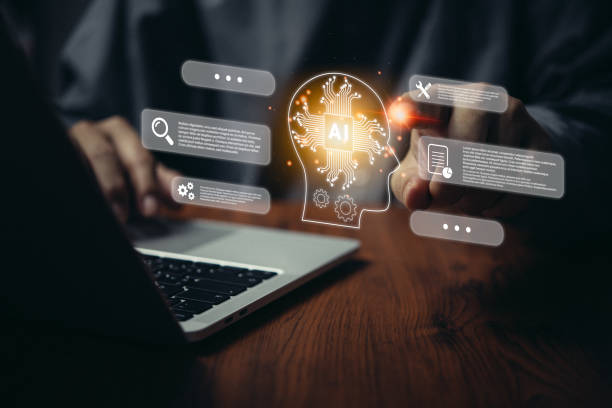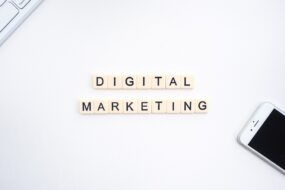
Chatbots & AI-Powered Customer Service
Gone are the days of waiting endlessly on hold. Thanks to chatbots and AI-powered customer service, businesses can now offer fast, efficient, and personalized support around the clock. Integrating AI in marketing and customer service is a game-changer that keeps customers happy while saving valuable time and resources. Let’s break down how chatbots are reshaping customer interactions.
1. Why Chatbots Are Taking Over
Chatbots have become the friendly faces (or voices) of customer support. They’re available 24/7, respond instantly, and handle a wide range of queries without getting tired or annoyed. Plus, they’re always polite—no matter how cranky your customers might be!
For businesses, chatbots offer significant cost savings. You don’t have to maintain a large support team for simple tasks. Instead, chatbots handle routine questions while human agents tackle more complex issues. This hybrid approach keeps both customers and support staff happy.
2. Personalization with a Human Touch
One of the coolest things about AI-powered customer service is how personalized it can be. Modern chatbots use natural language processing (NLP) to understand customer intent and respond in a way that feels almost human. Whether it’s greeting users by name or recommending products based on previous interactions, AI-powered bots make customers feel valued.
Imagine a chatbot that not only tracks your order but also offers tips on how to use your purchase. That’s next-level service! Personalization through AI boosts customer satisfaction and helps build long-term relationships.
3. Integrating Chatbots with Your Marketing Strategy
Chatbots aren’t just about customer support—they’re powerful marketing tools too. Integrating AI into your marketing strategy means using chatbots to recommend products, share discounts, and even gather feedback. It’s like having a virtual assistant that’s always ready to upsell or cross-sell without being pushy.
Use chatbots to capture leads by engaging website visitors with relevant offers. You can even program them to send personalized follow-ups, keeping your brand top-of-mind. The result? Increased conversions and happier customers.
4. Overcoming the Challenges of AI-Powered Service
While AI in marketing is transforming customer interactions, it’s not without challenges. Sometimes, bots can misinterpret queries or fail to offer the right solution. That’s why it’s essential to continuously train and update your chatbot with new data and scenarios.
Balancing automation with a human touch is key. Make sure your chatbot can seamlessly escalate issues to human agents when needed. This way, customers never feel trapped talking to a machine when they need real help.
AI in Ad Targeting & Personalization
Advertising has come a long way from generic messages plastered everywhere. With AI in marketing, ad targeting and personalization have become smarter and more effective than ever. Instead of guessing what your audience wants, you can now serve them exactly what they need—right when they need it. Let’s see how AI is transforming ad strategies!
1. Smarter Ad Targeting: Finding Your Ideal Audience
Imagine being able to show your ads only to people who are genuinely interested. That’s exactly what AI-powered targeting does. By analyzing massive amounts of data, AI identifies patterns in user behaviour, interests, and demographics. This means your ads reach the right audience without wasting resources.
For example, AI algorithms can track users’ online activities and purchase history to predict what they might buy next. Whether it’s social media ads or Google campaigns, AI ensures your message lands where it’s most likely to make an impact.
2. Hyper-Personalized Ads That Speak to Your Audience
Gone are the days of one-size-fits-all advertising. With AI, you can create hyper-personalized ads that resonate with individual preferences. From dynamic content that adapts to the viewer’s behaviour to personalized product recommendations, AI takes personalization to the next level.
Think about how Netflix recommends shows or how Amazon suggests products—you can apply the same concept to your ads. Customers are more likely to engage when they feel the content is tailored just for them.
3. Real-Time Optimization: Make Your Ads Work Harder
One of the most impressive features of AI in marketing is real-time optimization. Instead of setting up a campaign and hoping for the best, AI monitors performance continuously. It automatically tweaks elements like ad placement, bidding, and targeting to maximize results.
This means no more guesswork or manual adjustments. Your campaigns stay relevant and effective, even as consumer behavior shifts. Plus, real-time data insights help you understand what works and what doesn’t, so you can refine your strategy on the fly.
4. Balancing Automation with Creativity
While AI can do a lot of the heavy lifting, creativity still plays a crucial role. You need catchy copy, stunning visuals, and clever ideas to make your ads stand out. Let AI handle the data crunching while you focus on crafting compelling stories that resonate.
Keep testing new ad formats and ideas to see how they perform. AI will help you spot winners, but the human touch is what truly makes your ads unforgettable.
AI Content Writing: Boon or Bane?
Content writing has taken the digital world by storm. Whether you’re crafting blog posts, social media captions, or website content, AI tools promise to make it faster and easier than ever. But is it truly a blessing or a curse for marketers? Let’s dive into the pros and cons of using AI in marketing content.
1. The Boon: Speed and Efficiency Like Never Before
One of the biggest perks of AI content writing is its sheer speed. You can generate thousands of words in just a few minutes. This is a game-changer for businesses needing quick turnaround times and consistent content output.
AI tools can also help with brainstorming ideas, drafting outlines, and even suggesting catchy headlines. You get a ton of content without burning yourself out. Plus, AI can analyze trends and data to craft content that resonates with your audience.
2. The Bane: Lacking the Human Touch
As impressive as AI content may be, it often lacks the warmth and nuance that human writers bring. Readers might find AI-generated texts robotic or repetitive. While it’s great for technical writing and data-heavy reports, it struggles with storytelling and emotional engagement.
Your audience wants content that speaks to them on a personal level. If your brand voice feels too automated, it can put people off. That’s why a mix of AI efficiency and human creativity often works best.
3. Quality Control: Editing Is Still Essential
Even the most advanced AI writers aren’t perfect. They can make factual errors, miss context, or produce awkward phrasing. That’s why you still need a human touch to edit and refine the content before hitting “publish.”
Use AI as a helpful assistant, not a replacement. It’s fantastic for drafting and idea generation but doesn’t replace the quality control that only a human eye can provide.
4. Embracing AI Without Losing Your Voice
The key to using AI content writing effectively is to blend its efficiency with your unique voice. Let AI handle the mundane parts while you focus on creativity and personalization. It’s not about choosing one over the other—it’s about striking a balance.
Consider using AI for keyword optimization and data analysis while adding your flair to the final draft. This way, you get the best of both worlds: speed and authenticity.









